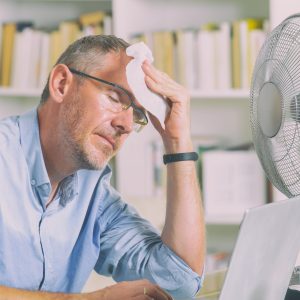 If you haven’t already noticed, climate worries are beginning to drive big changes in the construction industry around the world. Until recently, these changes have typically been focused on innovative new technologies or design strategies, such as the integration of solar panels or the addition of a green rooftop. But now governments are taking note and starting to make major adjustments to building codes.
If you haven’t already noticed, climate worries are beginning to drive big changes in the construction industry around the world. Until recently, these changes have typically been focused on innovative new technologies or design strategies, such as the integration of solar panels or the addition of a green rooftop. But now governments are taking note and starting to make major adjustments to building codes.
In Canada, a slew of transformative changes to building codes and guidelines are expected over the next few years, including extensive new structural design standards in the National Building Code.
This has enormous implications for HVAC specialists in particular, as many of the most harmful health risks posed by a warming climate can be mitigated by how effectively air is moved in and out of buildings.
Overheating health risks are on the rise
When a building overheats, occupants are at an elevated risk of heat stress, heat stroke, and even death. These risks are even more acute for specific demographics, such as the elderly or young children.
The temperature thresholds for overheating are surprisingly low: Prolonged exposure to indoor temperatures above 26 degrees Celsius can lead to the health risks mentioned above. Indeed, in a 2009 heat wave British Columbia suffered 110 more overheating deaths than would have been seen in a typical summer week.
To avoid overheating, ASHRAE Standard 55 recommends buildings stay below 24-25 degrees Celsius in the winter and below 27-28 degrees Celsius in the summer. As global temperatures rise year over year (and with Canada warming twice as fast as the rest of the world) these targets will become increasingly difficult to hit without deliberate planning from HVAC specialists.
Worsening air quality
Indoor air quality is another health risk that’s only getting worse as regional temperatures rise around the world. In some areas, such as Canada’s west coast and much of the United States, the alarming increase in the numbers and severity of forest fires is contributing dangerous levels of fine particulate matter to the air.
But even areas not at risk of wildlife smoke are predicted to experience worsening air quality. Why? Because with increasing temperatures more ozone is expected to be “trapped” at ground level, which contributes to urban smog and pollution.
Prolonged exposure to airborne contaminants such as carbon monoxide, volatile organic compounds (VOCs), and pollution are known to cause a range of health problems, including respiratory diseases, diabetes, and cancer.
Takeaways for HVAC Specialists
Proper ventilation and indoor air quality are always top-of-mind subjects for HVAC installers and specialists, but it’s no longer enough to plan for current conditions, since they are now changing each year.
The building you’re working on today will be occupied for the next 30 to 50 years. How effectively the building manages the internal temperatures and indoor air quality needs of those coming decades depends greatly on the heating, cooling, and ventilation systems you implement today.
One of the most effective ways HVAC specialists can future-proof their systems is to shift the way they do energy modelling and climate analysis. Today, these are performed using historical data from the past 30 years, but they don’t account for the ways in which the climate is changing. Instead, HVAC specialists and other stakeholders in a project’s design and planning stages can perform a future climate analysis, using climate projections that stretch all the way to 2080.
For more information on how to get started on this type of analysis, we suggest you download The Design Guide Supplement on Overheating and Air Quality, published by BC Housing. It includes several different scenarios to take into account, as well as some sources for trusted climate projection data that can be used to create your own future analysis.



